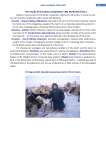Статьи журнала - Arctic and North
Все статьи: 955
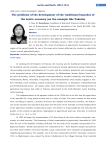
Статья научная
In this article attention is paid to the problems of livestock development of the Arctic and northern ulus (district) of Yakutia in a transformational period in the development of Russian society, which retain their relevance, in fact, to this day. The study of problems of agricultural development in the region of the period should be one of the most active factors affecting the conduct is objectively correct current agricultural policy.
Бесплатно
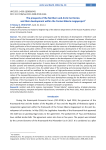
Статья научная
The article considers the main prerequisites and the directions of development of Northern and Arctic areas of the Krasnoyarsk Krai based on creation of reliable local transport and power infrastructure and formation of hi-tech and competitive territorial clusters. We examine both the current (new large mining and processing works in the Norilsk industrial region; development of Ust-Eniseysky group of oil and gas fields; gasification of the Krasnoyarsk agglomeration with the resources of bradenhead gas of Evenkia; ren-ovation of housing and public utilities of the Norilsk agglomeration; development of the Arctic and north-ern tourism and others), and earlier considered, but rejected, projects (construction of a large hydroelectric power station on the Nizhnyaya Tunguska river; development of the Porozhinsky manganese field; place-ment of the metallurgical enterprises using the Norilsk ores near Lower Angara region; construction of the meridional Yenisei railroad and others) and their impact on the development of the region. It is shown that in new conditions it is expedient to return to consideration of these projects with the use of modern tech-nologies and organizational approaches. It means, above all, formation of the local integrated regional pro-duction systems and networks providing interaction and cooperation of the fuel and raw, processing and innovative sectors. At the same time, the added value of the extracting and processing industries is local-ized in the area and will be mobilized for the purposes of high-performance technical and infrastructure base of the regional economy. The specified effect promotes economic development and leads to diversifi-cation of the monoprofile economy of the northern and Arctic regions. The provisions of the article and its suggestions can be considered as elements of the future development strategy for the Northern and Arctic territories of the Krasnoyarsk Krai. Results of the research can be used for adjustment and formation of long-term and medium-term investment programs at the state and municipal levels of management and also in development strategies of industrial, transport and power corporations.
Бесплатно
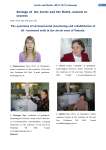
Статья научная
In the study of permafrost soils to characterize the features of the natural background, the identification of oil pollution of soil, its composition and characteristics of the boundaries, it was used a complex of analytic methods: IK-Fyrie spectroscopy, gas-liquid chromatography, chromatography mass-spectrometry and geochemical approach to the interpretation of the data. The results of an experiment of the study of the degradation of oil pollution in the soils of permafrost under the effect of oil destructors on native micro flora of hydrocarbon.
Бесплатно
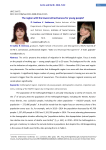
The region with the lowest attractiveness for young people?
Статья научная
The article presents the analysis of migration in the Arkhangelsk region. Focus is made on the people of working age — young people aged 15 to 29 years. The background for the study are the indicators of migration, statistics for the period 2010 — November 2014, laws and regulatory documents. The authors conclude that Arkhangelsk region is an area with low attractiveness to migrants. A significantly larger number of young, qualified personnel is leaving our area and its amount is bigger than the amount of newcomers. This situation damages regional economy and social sphere significantly.
Бесплатно
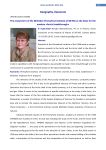
Статья научная
Scientists at the Permafrost Institute of the USSR made a comprehensive research in the Arctic and the Arctic shelf in the 60-es of the XX century. For several decades monitored the unique natural phenomena inherent in the Northern Territory. On the basis of these data, as well as through the work of the Institute of the modern expeditions with foreign participants was possible to made 'Arctic breakthrough' and the construction of a powerful research station on the island Samoilovsky.
Бесплатно
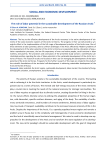
The role of labor potential in the sustainable development of the Russian Arctic
Статья научная
The key to the effective development of the Arctic resources is the active development of elements of the socio-economic systems of the Arctic territories. The progress in their use will provide a synergistic effect in the implementation of the full range of development priorities of the Arctic zone. One of these elements is labor potential, able to confront challenges in the Arctic effectively. Modern problems of the development of the labor potential of the Arctic territories are population decline, disruption of population reproduction processes, the low life expectancy of men and native people, social tensions in labor markets, and poverty. The provisions and conclusions of the presented study contain a scientifically substantiated position regarding the role of labor potential in the sustainable development of the Arctic territories of Russia. The research results are focused on their use for managing the development of the labor potential of the Arctic territories. Prospects for the further research of this topic are related to the study of the scientific foundations of the territorial self-development in achieving sustainable development of the Arctic territories of Russia.
Бесплатно
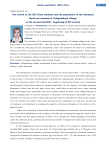
Статья научная
The problem of the relationship of the population of Vologda village to the learning process in the second half of XIX − early XX century. Based on the analysis of the total number of students, their age and sex composition, birth and examines the role of an elementary school in the lives of students and people living in the territory of Vologda Province. Study of the problem is based on an analysis of archival and published sources, record keeping and statistics. As a result, developing a system of measures by local governments to attract children to school, their number increased, especially in the zemskii schools.
Бесплатно
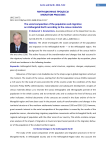
Статья научная
The article investigates the social composition of the population and migration in the Arkhangelsk North — in the Arkhangelsk region. The background for the research is a comparative analysis of the census held in the area since 1926. The author focuses of the transformation and changes that had occurred in the migratory behavior of the population and composition of the population by occupation, place of birth and residence in the following decades.
Бесплатно
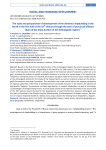
Статья научная
Based on the data from the State Archive of the Arkhangelsk Region, the article assesses the status of merchant and folk Pomor shipbuilding in the North in the 20th century. The key method of the research is the induction method, which is actively used in the historical school of economics, which set as its goal, including the analysis of specific economic situations in a state at a certain stage of its historical de-velopment. During the process of research, the analysis has been made of the certain cases and documents of the Arkhangelsk Society for the Study of the Russian North, as well as historical reviews of the Arkhangelsk Governorate Statistical Committee. The conclusion was made overall about the negative perception of regional authorities of the level of development of commodity turnover in the Empire, the absence of high-quality “logistics,” bureaucratic red tape, legal barriers to support shipbuilders, as well as technological advantages of foreign fishing vessels. A constructive reform of the regional authorities in the second half of the 19th century meant the plan for the development of road infrastructure between Arkhangelsk and the town of Povenets in the Olonets Province (Governorate), the development of skipper courses, the creation of a typical improved model of a karbas and a cargo schooner for training future shipbuilders, skippers.
Бесплатно
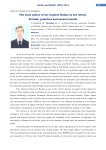
The state policy of the modern Russia in the Arctic: periods, priorities and several results
Статья научная
The article analyzes the public policy of modern Russia in the Arctic region, it is an attempt to periodization, presentation characteristics of each stage, priorities, and summed up the results.
Бесплатно
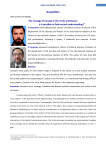
The strategy of Canada in the Arctic and Russia: is it possible to find mutual understanding?
Статья научная
Canada's Arctic policy on the modern stage is analyzed in the article. It is also studied Canadian and Russian relations in this region. They are identified, like the most ‛problematic’, and also the favourable spheres for cooperating of 2 states in the Far North. It is concluded that among ‛official’ arctic powers, Canada is the most likely partner for Russia in the regional cooperating.
Бесплатно
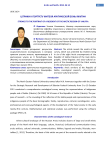
The strokes to the portrait of a resident of the Arctic zone of Yakutiya
Статья научная
The article reveals the results of the survey, which was attended by residents living in six of the eight Arctic encampments of the Republic of Sakha (Yakutia) of the main demographic, ethno‐linguistic and socio-cultural aspects of the development of the Yakut society in the early twenty-first century.
Бесплатно
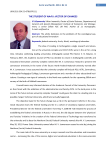
The student of NArFU: vector of changes
Статья научная
The article dedicates to the problems of the sociological support of educational innovation.
Бесплатно
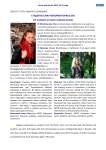
The students of NArFU conquered Brussels
Статья научная
The students of the NArFU named after M. V. Lomonosov hold a week took part in the training course of Journalism in Brussels. During their trip they visited the main Institutions of European power, such as European Union, European Commission and European Parliament. They saw all the under water stones of the work of the journalists in NATO and they discussed the main questions, which were connected with the Arctic with Russian mission in NATO and they also had a chance to take part in the elections of the president of Russia.
Бесплатно
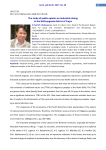
The study of public opinion on industrial mining in the Nefteyugansk district of Yugra
Статья научная
In this article, we consider the views of respondents on the industrial development of mineral deposits on the example of the Nefteyugansky district, Yugra. The analysis of views regarding the development of mineral deposits represents a comparative sociological study. It summarizes the results of a poll conducted in 2015 on the territory of Nefteyugansk district and earlier studies done in 2008 and 2012. The results of polls showed that most respondents had positive sentiments to the industrial mining. On the other hand, in contrast to 2008, in 2015, the proportion of people, who opposed the commercial development of mineral resources, got bigger. At the same time, most respondents believed that industrial mining resulted in environmental degradation of the area (district) of their residence.
Бесплатно
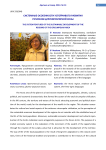
The system of the sustainable development of the regions of the circumpolar area
Статья научная
The article presents a system approach in the research of the sustainable development in the Arctic region and its basic evidence as a system, the attention is paid to features of the development of the languages.
Бесплатно
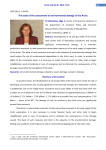
The tasks of the assessment of environmental damage in the Arctic
Статья научная
Development of oil and gas fields of the Arctic zone carries risks of destroying ecosystems and causing significant environmental damage. It is therefore particularly important to take preventive conservation measures in the early stages of exploration of the Arctic. The basis of such measures and tools is the valuation of environmental damage that could reduce the risk of environmental degradation in the Arctic zone. In order to provide the ability of the restoration work, it is necessary to create financial assets or other tools to begin rehabilitation work immediately in case of emergency and to eliminate the consequences of the damage caused after the completion of the work.
Бесплатно
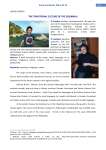
The traditional culture of the esquimau
Статья научная
A brief description of the origin, name, language, of esquimau, indigenous beliefs, cultures and contemporary sociopolitical life.
Бесплатно
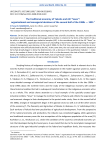
Статья научная
On the basis of archival documents, entered into scientific circulation, the author considers the local experience of organizational and management activities in relation to the farms of the North of Yaku-tia within a specially created agro-industrial complex (AIC). In the considered period of the AIC “Sever” ac-tivities, in 1989-1991, organizational processes of unbundling of state farms and the beginning of reorgani-zation of management were decisive. At the end of 1990s, for the first time, decisions on transition to mar-ket relations were officially declared by the AIC. At the same time, the real social and economic situation of farms had already begun to show the deterioration, incl. a decrease in the quantitative indicator — reduc-tion in the number of farms in the studied areas. As it is in the documents, the state of home reindeer hus-bandry, the leading economic sector in the North, was of a particular concern.
Бесплатно

